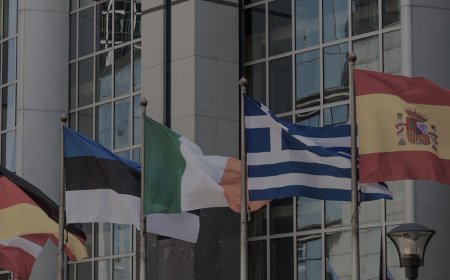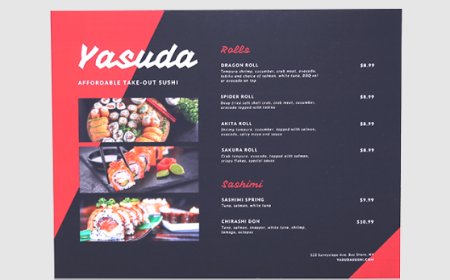Stay Ahead: What Pinterest Algorithm Changes Mean for Your Reach
Pinterest is not just a platform for inspirationit's a powerful visual search engine that continues to evolve to meet user needs and market demands. As with any algorithm-driven platform, understanding how it works is key to maintaining visibility and growing your influence. Over the past few years, Pinterest algorithm changes have significantly impacted how content is ranked, distributed, and seen by users.
Whether you're a content creator, blogger, business owner, or digital marketer, staying ahead of these changes is critical to maintaining and expanding your reach on Pinterest. In this article, well break down the latest Pinterest algorithm changes, what they mean for your content strategy, and how you can adapt to stay visible in an increasingly competitive space.
Understanding the Pinterest Algorithm
Pinterests algorithm is designed to provide users with the most relevant, timely, and engaging content based on their interests and behavior. Unlike social platforms focused on real-time engagement (like Instagram or Twitter), Pinterest values evergreen content and long-term value. That means a Pin you publish today can still gain traffic months or even years later.
However, the platform is constantly tweaking its algorithm to improve user experience, promote fresh content, and crack down on spam. These Pinterest algorithm changes influence everything from how your Pins are ranked in search results to how often they appear in users' home feeds.
Key Pinterest Algorithm Changes You Need to Know
1. Emphasis on Fresh Pins
One of the biggest shifts in recent years is Pinterests focus on Fresh Pins. The algorithm now prioritizes new, original images or videosespecially those that havent been seen before on the platform.
If youre re-pinning the same image repeatedly or relying solely on older content, your reach may suffer. Instead, create multiple unique images for the same blog post or product page to give Pinterest fresh content to share.
What to do:
-
Use tools like Canva to design 25 new Pins for each piece of content.
-
Change image layouts, text overlays, and colors to make each Pin distinct.
-
Avoid recycling identical Pins across boards too often.
2. Relevance and User Engagement
Pinterest wants to show users Pins theyre likely to engage with. The algorithm evaluates a combination of factors:
-
How users have interacted with similar content
-
How often a Pin gets saved, clicked, or commented on
-
The quality of the source URL
-
Relevance to the search query
These changes mean you need to optimize your Pins for engagement. Compelling visuals and helpful content are more important than ever.
What to do:
-
Use strong, clear headlines in your Pin design.
-
Write keyword-rich descriptions that offer value.
-
Link to fast-loading, high-quality pages on your website.
3. Idea Pins Are Getting More Visibility
Another major update is Pinterests push for Idea Pins (formerly Story Pins). These multi-slide Pins allow creators to share tutorials, stories, tips, or guides directly on the platform. They dont link to external sites, but Pinterest heavily promotes them to keep users engaged within the app.
While Idea Pins may not drive direct traffic, they do boost your visibility and help build your brand presence.
What to do:
-
Use Idea Pins to share step-by-step instructions, behind-the-scenes content, or valuable mini-lessons.
-
Add text overlays and voiceovers for better storytelling.
-
Treat them as a top-of-funnel tool for brand awareness.
4. Stronger Spam Detection and Account Health Monitoring
Pinterest has strengthened its spam detection systems to ensure quality content dominates the feed. Accounts that engage in keyword stuffing, excessive re-pinning, or lead to low-quality websites may see reduced reach or even suspension.
What to do:
-
Focus on consistency, not quantity. Spread your Pins out using schedulers like Tailwind.
-
Avoid deceptive practices like misleading headlines or images.
-
Regularly audit your content and links for quality.
Pinterest favors creators who contribute genuine, helpful content over those chasing clicks.
How Pinterest Algorithm Changes Affect Your Reach
These updates mean that creators can no longer rely on one Pin going viral or mass re-pinning to multiple boards to gain reach. Instead, Pinterest is rewarding:
-
Consistency in publishing
-
Fresh, original content
-
Niche expertise and relevance
-
Quality over quantity
If you want to maintain or grow your reach, adapting to these changes isnt optionalits essential.
How to Stay Ahead and Thrive
Heres how you can thrive under the new Pinterest algorithm:
1. Prioritize Fresh Content
Design new Pin images for each post, product, or offer you promote. This signals to Pinterest that you're providing new value.
2. Use Strategic Keywords
Optimize Pin titles and descriptions using keywords people are actively searching for. Use Pinterests search suggestions as a guide.
3. Focus on Quality and Value
Dont just promoteeducate, inspire, and help your audience. High-value content leads to higher engagement, which boosts visibility.
4. Monitor Your Analytics
Pinterest Analytics (or tools like Tailwind) can show which Pins are performing well. Study what works and create more content like it.
5. Mix Static and Idea Pins
While static Pins are best for direct traffic, Idea Pins are great for reach and awareness. Use both formats to cover all bases.
Final Thoughts
Pinterests evolving algorithm is designed to surface the most helpful, inspiring content for users. By embracing the latest Pinterest algorithm changes, you position yourself to not only survivebut thrive. Focus on originality, relevance, and real value, and your reach will grow naturally.
Instead of fighting the changes, align with them. Pinterest rewards those who adapt and consistently offer value. Thats how you stay aheadand how you win long-term.












































